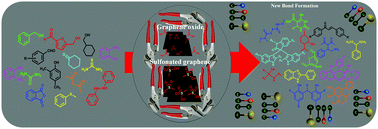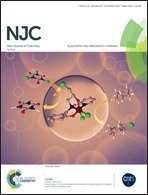Recent advances in organic reactions catalyzed by graphene oxide and sulfonated graphene as heterogeneous nanocatalysts: a review
Abstract
Over the past decade, the application of carbocatalyst systems has been preferred over that of homogeneous catalytic systems because of their advantages such as physical and thermal stability of the catalysts in successive reaction runs and reusability. Among these, the unique chemical, physical and mechanical properties of graphene oxide (GO) and graphene derivatives, particularly sulfonated graphene, as two types of carbocatalysts have led to the development of heterogeneous carbocatalyst systems for efficient organic synthesis. GO and sulfonated graphene are quite prevalent and probably suitable acidic catalysts for both research laboratories and industrial processes. Herein, different organic transformations catalyzed by GO and sulfonated graphene have been reviewed, which show suitable catalytic activities for application in organic reactions. This review is divided into two main parts: (I) organic reactions catalyzed by GO and (II) organic reactions catalyzed by sulfonated graphene. As the main goal of this review, a comprehensive view about the use of GO and sulfonated graphene developed for the synthesis of different organic compounds, with emphasis on the role of reusable nanocatalysts, is presented.

- This article is part of the themed collection: 2017 Focus and Perspective articles


 Please wait while we load your content...
Please wait while we load your content...